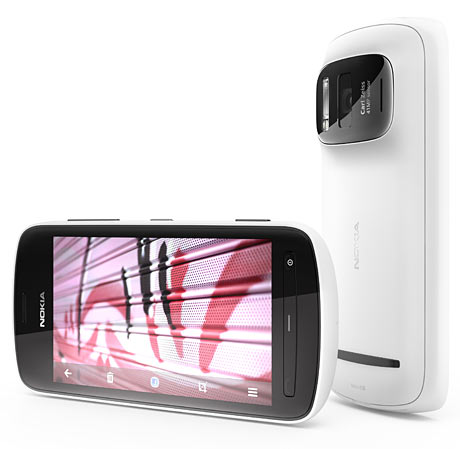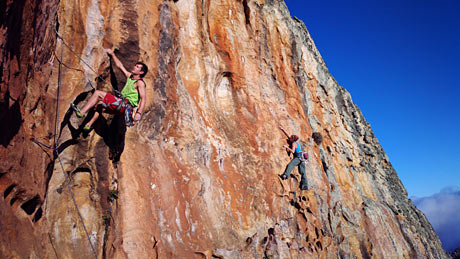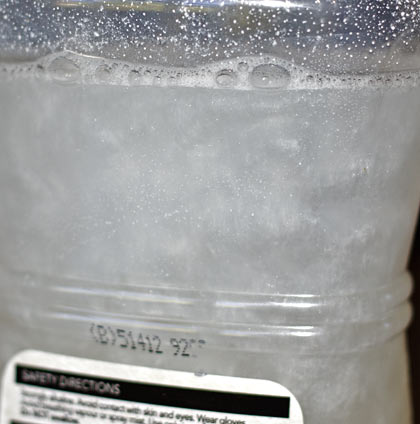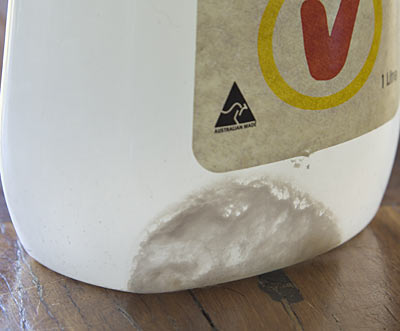Australia, or at least Victoria, is getting "smart" electricity meters.
Unlike the old spinning-disc or slightly newer digital meters, smart meters can report power usage in real time, to the customer via a display inside the house and to the power company as well, without any requirement for legions of meter-readers. Smart meters can do various other tricks, too, like for instance changing the cost of electricity by time of day, to make it more expensive when there's high demand and deter some people from turning on the air conditioner and adding their own little electrical vote for a new coal-fired power station.
Heck, the smart meters may even be able to measure power factor, and theoretically create a need for those zillions of "power saver" gadgets. Which the power saver gadgets will not actually fill, of course, on account of how they usually don't do anything at all, but you can't have everything.
The Australian meters seem to report every thirty minutes, via radio.
So, naturally, people think they cause cancer.
But I'm getting ahead of myself.
I was delighted beyond human comprehension to discover a one-stop shop for Aussie smart-meter opposition, stopsmartmeters.com.au. Actually, I was first pointed to this page on "Holistic Help", but I only made it to the oddly popular claim that smart meters somehow kill nearby plants before I went somewhere else, lest I burst an important blood vessel.
Herewith, a response to Smart Meters in Victoria: Information and Concerns.
There are some valid complaints on that page. Apparently some smart meters have overcharged customers, for instance. And there've been some typical government-program deployment boondoggles - cost blowouts, the possible need to spend more money to change the radio frequency band the meters communicate on because of interference, and so on.
There are also privacy concerns about the every-30-minutes communication of household electricity use, and whose hands this information could get into. I'm having a hard time figuring out a way in which selling of this data to marketing firms could be a major problem, beyond just contributing its own particle to the mountain of privacy-damaging things in the modern world. But if the data isn't encrypted well enough, and meter IDs can be converted into addresses relatively easily (possibly even if you need a directional antenna to do it), then it might become possible for one burglar in a van to quickly figure out who, nearby, seems to have gone on holiday.
There are also concerns about coupling of the radio-frequency output of the smart-meter antennas to household wiring, possibly damaging appliances, though I don't think anybody's done a proper study to see whether the rate of appliance failure is actually any higher after the new meter's installed.
And then there are some real, but not necessarily valid, complaints. People object, for instance, to power being made more expensive at certain times of day, which they say is unfair, though I'm not sure exactly how. If it's unfair to charge more for peak-period electricity, then it's also unfair if you're only allowed to park your car in some particular location for half an hour during the day, but can legally occupy the same space all night.
There's a claim that consumers don't benefit from the new meters. OK, that's a reason to object, I suppose, but consumers don't benefit when, say, petrol becomes more expensive, either. This is an argument against silly PR from the electricity companies that tries to make you think the new meters will make your life better, especially since the stingy buggers don't even seem to be providing any indoor display units. But that's all this complaint is. Just because you want to keep paying low prices for something doesn't give you a right to do so, especially when that "something" is electricity which previously sold at an artificially low price because the cost of warming the damn planet wasn't factored in.
And then there are feeble complaints, like the possibility that the meters will not be installed safely.
And then, there's the bulk of the lengthy page, which is proudly devoted to ridiculous complaints.
To start with an easy one, the notion that coupling radio energy to household wiring could cause fires betrays a serious misunderstanding of the amount of energy the meter emits, and how well it could be received by household wiring. You could pump that one whole watt of high-frequency RF directly into your wall wiring, and I swear to you upon my beloved Necronomicon that no wires would get hot and start fires. If the only way in is the fraction of one per cent of the energy that the household wiring will manage to receive... well, it's good of Stop Smart Meters to so quickly make clear their opinion of mere "knowledge" and "logic".
And, of course, now we're off and racing with good old mobile-phones-cause-brain-cancer claptrap. The smart meters broadcast in the same 900MHz band as our GSM mobile phones here in Australia, so clearly they pose a similar risk, right?
The World Health Organisation say it's "possible" that mobile phones cause cancer. People who relay this information are generally less eager to make clear that the WHO has categorised this possible risk, from "long-term, heavy use" of mobile phones, as being in the same "Group 2B" class as traditional Asian pickled vegetables, and coffee.
The Stop Smart Meters page is at least aware of this, and points out that there are plenty of straight-up poisons on the Group 2B list too, like for instance lead. But then the author erroneously tries to claim that since lead is poisonous and phone radiation is now on the same possible-carcinogen list as lead, phone radiation should be treated as something similar in danger to lead.
This is, to be frank, stupid. Yes, lead is poisonous, but there's only feeble evidence that it's a carcinogen, which is why it's on the 2B list, and not for instance the 2A "probably carcinogenic" list, or the Group 1 "definitely carcinogenic" list. Phone radiation is self-evidently not a poison like lead. None of the IARC carcinogen lists are lists of poisons. Phone radiation is on the same list as lead because there's only feeble evidence that it's a carcinogen.
Stop Smart Meters go on to claim that "a significant proportion of Victorians refuse to use devices such as mobile phones or baby monitors because of sensitivities or concerns about future health implications". This not only uses a rather stretched definition of the word "significant", but also pretends that science is a democracy. Which it isn't. It doesn't matter how many people think baby monitors cause cancer, if they don't. Likewise, it doesn't matter how many Koreans think having an electric fan in your bedroom is very dangerous, if it isn't.
Trundling down the extra-big Stop Smart Meters page, there's a fine example of the kit-and-kaboodle routine of collecting supporting quotes from as many people as possible, without paying any attention to the reliability of the sources.
The American Academy of Environmental Medicine, for instance, claim that smart meters are dangerous, and that claim is mentioned on the Stop Smart Meters page. The AAEM also oppose fluoridation of drinking water (PDF), on the grounds that "fluoride is a known neurotoxin and carcinogen even at the levels added to the public water supplies". This is news to the World Health Organisation that Stop Smart Meters were so enthusiastic about a moment ago.
The AAEM also believe that "mercury in vaccinations constitutes a significant exposure" (PDF), even though the mercury-containing preservative thiomersal is no longer in almost any vaccines that anti-thiomersal campaigners insisted were causing terrible harm to children, and this change has caused no epidemiological effect at all. I refer you once again to the World Health Organisation.
Oh, and the AAEM are really keen (PDF) on that whole multiple chemical sensitivity thing. Which is one of those illnesses that doesn't seem to manifest when a sufferer is exposed to the alleged causative agent but doesn't know it, and does manifest when a sufferer thinks they're being exposed, but they aren't.
The World Health Organisation has little to say about MCS, except to point out that people who believe they have it seem rather like the people who think they're "electrosensitive".
Funny they should mention that. Because Stop Smart Meters believe, of course, that "electrosensitivity" is real. Which it is, in a sense; people who suffer from it really do suffer. There's just no good reason to suppose that this suffering actually has anything to do with "radiation", and numerous studies that show it does not.
Anything a smart meter broadcasts is, apparently, bad. Stop Smart Meters complain that mesh-networked meters broadcast more frequently than meters with long-range radios, because mesh networks need relays to get the feeble signal from each meter to the actual power-company receiver for the area, and the relays are built into the meters. But since this is all because the radios are more feeble, I fail to understand why Stop Smart Meters automatically assume that this is yet another thing to worry about.
People hold mobile phones to their heads, often for extended periods. So if a watt or two of nine hundred and something megahertz radio waves actually can hurt you, it's sensible to presume that heavy mobile phone users would develop these diseases, presumably in their head, and presumably preferentially on the side they habitually press their phone to.
People are not in the habit of leaning their head on their electricity meter all day. And even the mesh meters do not normally broadcast all day. I think the non-mesh meters broadcast for a total of about five minutes a day, but I don't have a strong enough source for that to bet anything on it.
Even if you're sitting in a chair on the other side of the wall from the meter, with its antenna a mere metre from your head, then you'll be exposed to way, way less RF energy per second than you would with an iPhone pressed to your head in a dodgy reception area, and the exposure may be for only minutes, or even seconds, per hour. Arguing that this is a major risk, even if heavy cellphone use is dangerous, is like saying that hypothermia is lethal, so you'd better never eat ice cream.
Stop Smart Meters also appear to think that RF from the meter getting into the home wiring will cause those terrible microwaves to radiate from all of your house wiring. Once again, this completely ignores the concept of "power", how much of it there is in the first place, how much of it can manage to get into the house wiring via a miserably inefficient "antenna", and how much it attenuates with distance from the wires.
I could go on with this, but life's too damn short. Yes, there are reasons to object to the new meters; the new system seems very likely to come with more electricity price hikes, for instance, and you may even be overcharged on top of that.
But the bulk of Stop Smart Meters' argument isn't about that.
Stop Smart Meters appear to be, like many other people, under the impression that anything called "radiation" must be bad. I would not be surprised if they also don't want any "chemicals" in their food. People like this should logically therefore be frozen into a zero-Kelvin lump and stored in a an earthed lead box containing a hard vacuum, but for some reason they seem to be fine with light bulbs and moonlight and the drinking of dihydrogen monoxide.
If you don't know what radiation is, and you don't know what chemicals are, and the inverse-square law might as well be the Collected Proceedings of the Vorlon Linguistic Society for all the sense you can make of it, then I implore you to seek education, and remind you that activist organisations of any kind are much more likely to be in the bullshit business than the education one.
If you don't fancy the idea of education, I suggest you live a life of happy-go-lucky ignorance, taking cues from a housecat, or a domestic dog, depending on your preferences.
Just please don't spend your time worrying about the terrible threat someone says is posed by technologies, cultural changes or particular types of other human whom you do not understand. Every minute you spend worrying about Islamists conquering the world, or commercial airliners spreading mysterious poisons, or electricity meters giving you cancer, does nothing but move you one minute closer to your actual death, and gains you nothing at all.











